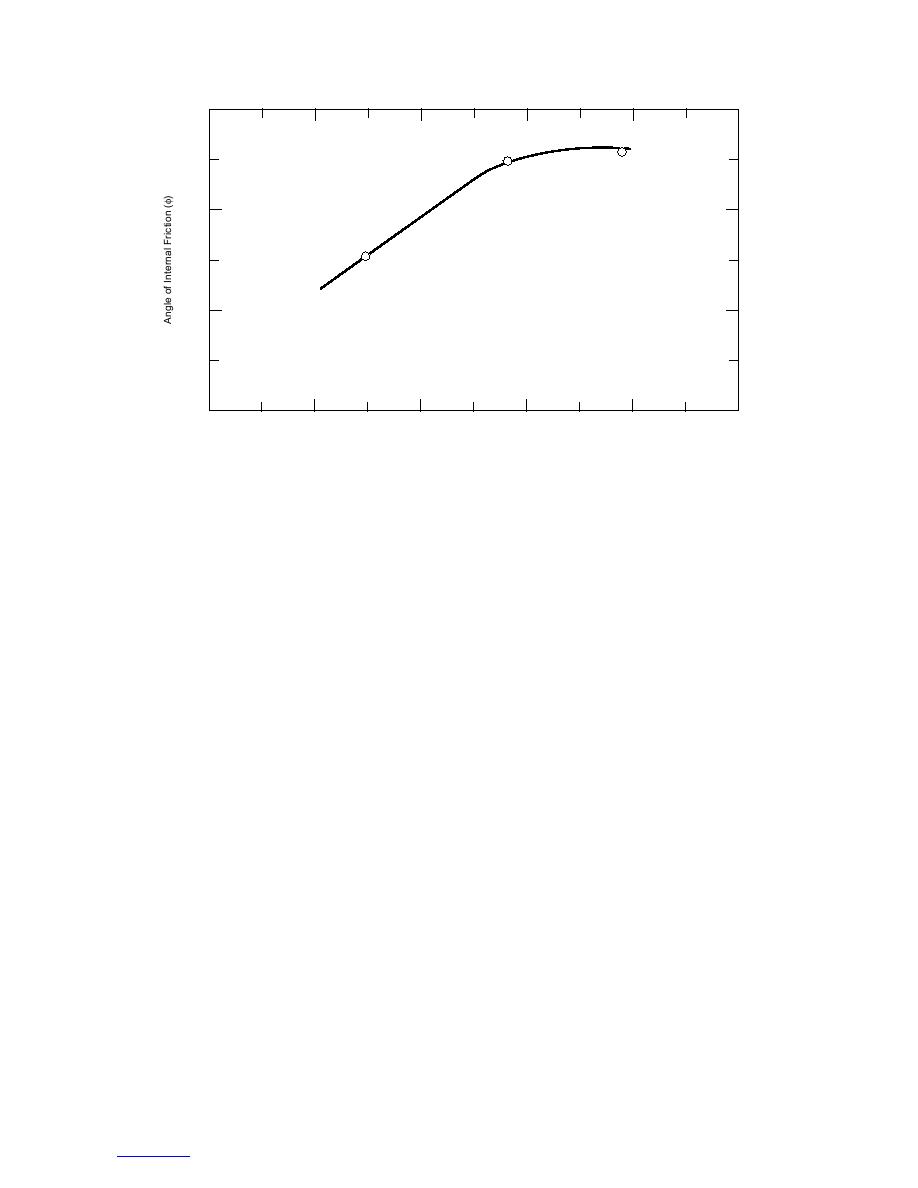
60
40
20
0
0
2
4
6
8
10
Particle Index
Figure 33. Angle of internal friction as a function of particle index.
frictions ranged between 31 and 51. The effect of per-
LITERATURE CITED
cent crushed material on the angle of internal friction was
AASHTO TP46-94 (1994) Standard Test Method for
minimal at 50% and higher. However, there was a signif-
Determining the Resilient Modulus of Soils and Aggre-
icant difference when the aggregate was 100% natural.
gate Materials. American Association of State High-
The difference in the angle of internal friction was 20.
way and Transportation Officials Provisional Standard.
The effect of void ratio was significant on the maxi-
Allen, J.J., and M.R. Thompson (1974) Resilient
mum shear stress and shear strength of the material.
response of granular materials subjected to time-
There was no distinct effect of confining pressure on
dependent lateral stresses. Transportation Research
the shear strength, except that the shear strength was
Record, 510: 113.
higher at the higher confining pressure. The effect of
ASTM D 2488-90 (1996) Standard practice for descrip-
void ratio was more significant than that of confining
tion and identification of soils (visualmanual proce-
pressure. Similar tests conducted on 150-mm test sam-
dure). ASTM, vol. 04.08, Soil and Rock.
ples indicated that the angle of internal friction ranged
Barksdale, R.D., and S.Y. Itani (1994) Influence of
between 41 and 46. With these tests, the effect of con-
aggregate shape on base behavior. Transportation
fining pressure was significant. At 36 kPa confining
Research Record, 1227: 171182.
pressure, the effect of void ratio on shear strength was
Brown, S.F., and P.S. Pell (1967) An experimental
minimal. However, at 70 kPa, void ratio affected the
investigation of the stresses, strains and deflections in
aggregates' shear strength. In both cases, void ratio had
a layered pavement structure subjected to dynamic
a more significant effect on shear strength than did the
loads. In Proceedings of the 2nd International Confer-
percentage of crushed aggregates.
ence on the Structural Design of Asphalt Pavements,
The particle index (PI) as modified by Michigan
Ann Arbor, Michigan, 711 August 1967, p. 487504.
DOT used the complete gradation and was a good indi-
Haynes, J.H., and E.J. Yoder (1963) Effects of
cator of the crushed (angular) content of a given base
repeated loading on gravel and crushed stone base
course gradation. It was found that the PI test can be an
material used in the AASHTO road test. Highway
indicator of the resilient and shear properties of the base
Research Board Record, 39: 8286.
course aggregate gradation.
Hicks, R.G., and C.L. Monismith (1971) Factors in-
Results presented in this report are based on test
fluencing the resilient response of granular materials.
results at optimum densities. The effect of increased
Highway Research Record, 345: 1531.
moisture content may change the effect of PI on the
Hicks, R.G., and C.L. Monismith (1972) Prediction
mechanical properties of base course aggregates.
of the resilient response of pavements containing granu-
lar layers using non-linear elastic theory. In Proceed-
24



 Previous Page
Previous Page
